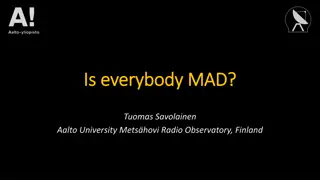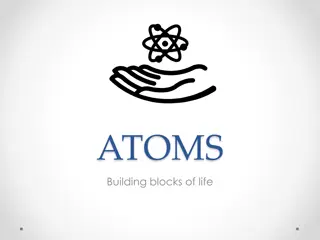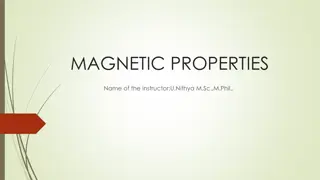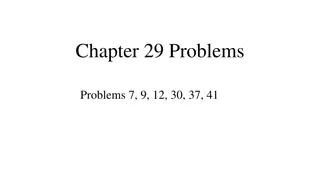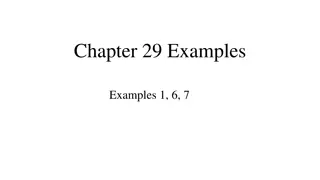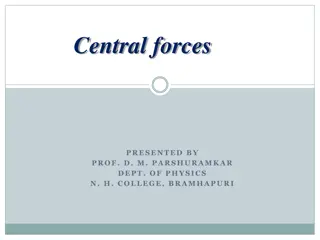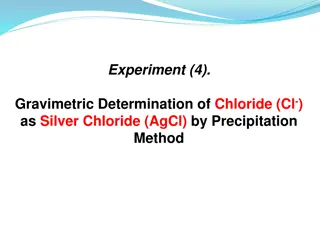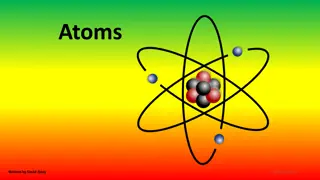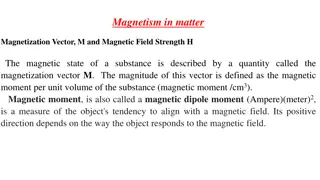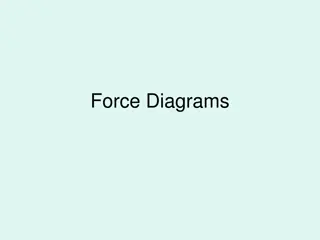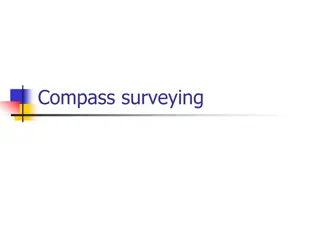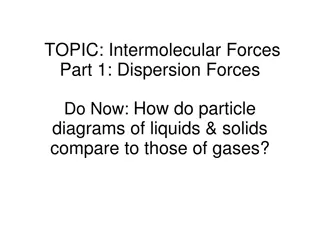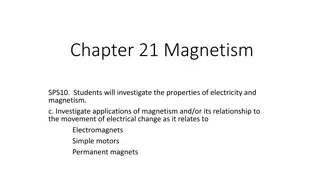Magnetic Forces on Silver Atoms
The effects of inhomogeneous magnetic fields on a beam of silver atoms in physics experiments. Learn about magnetic dipole moments and displacement dynamics, and witness space quantization evidence through atomic magnet displacement. Maxwell's law of velocities is also discussed. Discover the fascinating interactions between atomic magnets and magnetic fields.
Download Presentation

Please find below an Image/Link to download the presentation.
The content on the website is provided AS IS for your information and personal use only. It may not be sold, licensed, or shared on other websites without obtaining consent from the author. Download presentation by click this link. If you encounter any issues during the download, it is possible that the publisher has removed the file from their server.
E N D
Presentation Transcript
Dr. J P Singh Associate Professor in Physics PGGC 11 Chandigarh
A narrow beam of silver atoms was produced by heating silver in an oven and collimating the atoms that emerged from the oven. The beam passed through an inhomogeneous magnetic field resulting in a force on the atomic magnetic moments.
A magnetic dipole moment may be represented as a magnet as shown in the diagram. In an inhomogeneous magnetic field the magnet will experience a net force as well as a net torque. orientation of the dipole moment m in the inhomogeneous magnetic field B. The potential energy U is given by cos . B B U = = The direction of the net force depends on the South Pole South Pole Net force If the magnetic field is in the z- direction, the force is given by dU Fz cos = = Net force N S S N cos F dB dB = = z a North Pole M M dz dz dz If l is length in magnetic field, time taken t = l/v, therefore displaced along z-direction is M 2 2 2 2 1 1 cos cos dB l l 2 dB 2 = = = . z at 2 2 dz dz v Mv
/ 1 2 3 kT According to maxwell s law of velocities = v M 2 2 cos cos l dB l dB = = z kT 3 6 dz kT dz 2 . M M This gives maximum displacement of the silver atoms at the centre as shown in figure. If there is no magnetic field or uniform magnetic field i.e. then z = 0. Hence no displacement along z-direction. And there is straight line shown in figure. If there is a non uniform magnetic field, the atomic magnets (silver atoms) will be displaced from the path along z-axis depending upon their orientations (value of ) and hence produce a trace on the plate as shown in figure. While this was clear evidence of space quantisation. dB = 0 dz
In the absence of magnetc field or in uniform magnetic field In non uniform magnetic
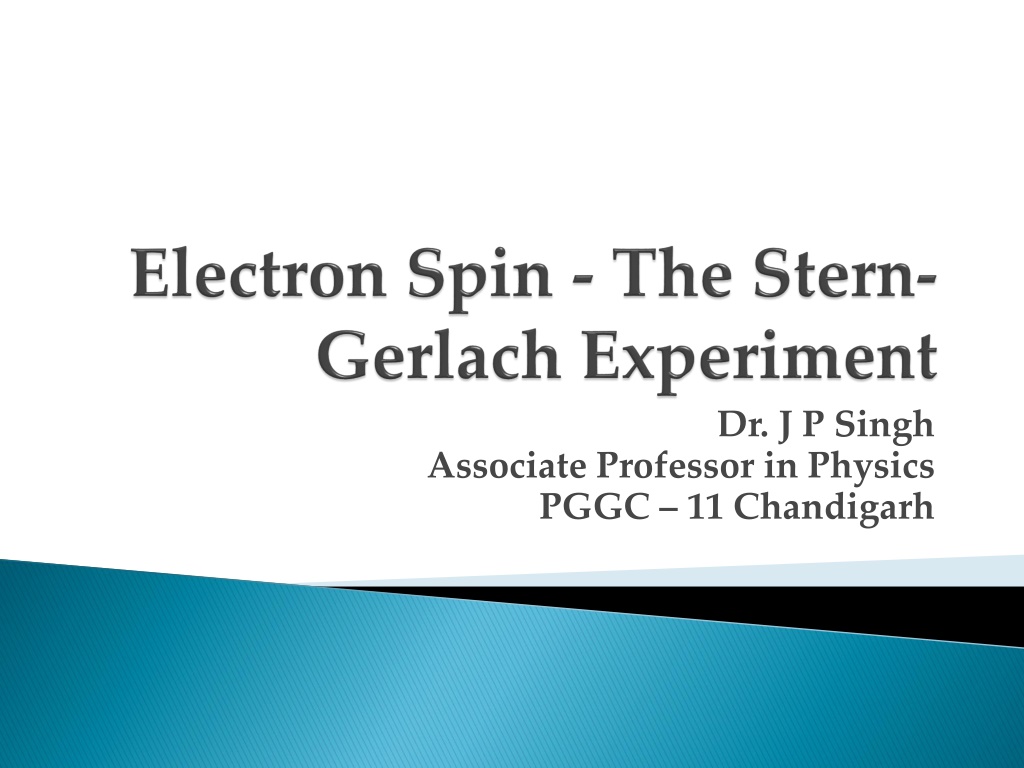
 undefined
undefined


